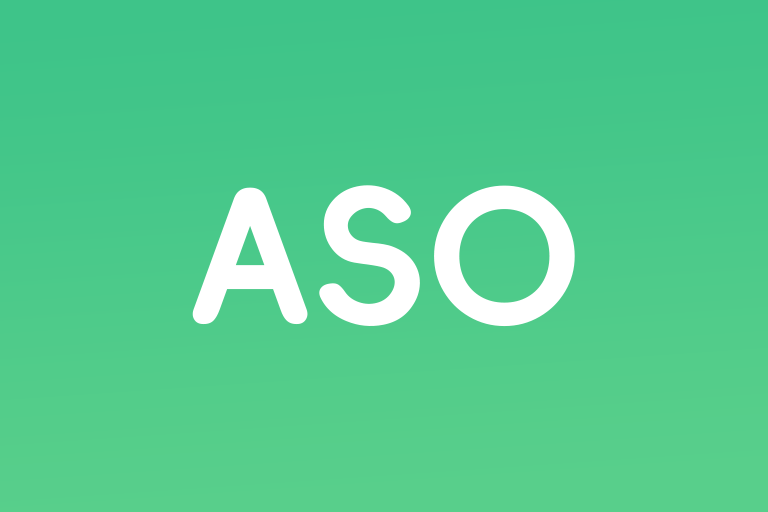1. Keyword Optimization in Content
Keyword optimization involves strategically incorporating relevant keywords related to your app and its features within various types of content, such as blog posts, social media posts, videos, and infographics. Here's how to do it effectively:
Research Relevant Keywords
Conduct thorough keyword research to identify terms and phrases that potential users might use when searching for apps similar to yours. Tools like Google Keyword Planner, SEMrush or FoxData Keyword Research Tools can help you discover relevant keywords and assess their search volume, competition, and relevance.
Understand User Intent
Understand the intent behind the keywords you're targeting. Are users looking for information, solutions to a problem, or ready to download an app? Tailor your content to match the user's intent to provide valuable and relevant information.
Integrate Keywords Naturally
Incorporate target keywords naturally into your content. Avoid keyword stuffing, as it can negatively impact readability and quality. Focus on seamlessly integrating keywords into headings, subheadings, body paragraphs, image alt text, meta descriptions, and other relevant places.
Optimize App Store Listing
Optimize your app store listing (e.g., app title, description, and keyword field) with relevant keywords. This will improve your app's visibility within the app store's search results and increase the likelihood of users discovering and downloading your app.
2. Create High-Quality Blog Content
Creating high-quality blog content is a cornerstone of content marketing strategy for enhancing ASO. Here's how to execute this strategy effectively:
Identify Relevant Topics
Research topics relevant to your app's niche or industry. Consider the pain points, interests, and questions of your target audience. Use keyword research tools to identify popular search terms and topics with high search volume but relatively low competition.
Plan a Content Calendar
Develop a content calendar outlining topics, titles, and a publication schedule for your blog posts. This ensures consistency and organization. Aim for a mix of evergreen content and timely content related to current trends or events.
Create Compelling Content
Write engaging, informative, and well-researched blog posts that provide value to your audience. Address their problems, answer their questions, and offer practical solutions. Use a mix of text, images, infographics, and multimedia to make your content visually appealing and easy to digest.
Optimize for SEO
Incorporate relevant keywords naturally throughout your blog posts. Optimize meta titles, meta descriptions, headings, and alt tags for images to enhance your blog's SEO performance. Interlink your blog posts to improve navigation and increase dwell time on your website.
Promote Your Blog Content
Share your blog posts across social media channels, email newsletters, and relevant online communities to increase reach and engagement. Encourage your audience to share, comment, and interact with your content to boost visibility and foster community engagement.
3. Guest Blogging and Influencer Collaborations
Guest blogging and influencer collaborations are effective strategies for enhancing the visibility and credibility of your app by leveraging the audiences of established influencers and industry experts.
Guest Blogging
Write and publish content on other websites or blogs within your industry or niche. By contributing valuable content to established platforms, you can tap into their existing audience base and drive traffic back to your app.
Influencer Collaborations
Partner with individuals who have a significant following and influence within your target audience. These influencers can create content that promotes your app to their followers, helping you reach new audiences and build credibility.
4. Video Content
Video content can be a highly effective tool for promoting your app and driving downloads. Here's how to leverage video content effectively:
Demo Videos
Create concise yet compelling videos that provide an overview of your app's core features and functionalities. Highlight how users can navigate through the app and benefit from using it.
Tutorials
Develop tutorial videos that walk users through various functionalities of your app step by step. Break down complex processes into easy-to-follow instructions and provide practical examples.
Explainer Videos
Create engaging explainer videos that communicate your app's value proposition and what sets it apart from competitors. Use storytelling techniques, animations, and visuals to convey your app's unique selling points.
Social Media Promotion
Share your videos across social media platforms to reach a wider audience. Optimize your videos for each platform's specifications and audience preferences. Use catchy captions, hashtags, and eye-catching visuals to grab users' attention.
Website Integration
Embed your videos on your website's landing pages, product pages, or blog posts. Videos can help increase user engagement, dwell time, and conversion rates by providing visual demonstrations of your app's value proposition.
App Store Optimization (ASO)
Enhance your app store listing with video content to make it more engaging and informative for potential users. Many app stores allow you to upload promotional videos that autoplay on your app's listing page.
5. Social Media Marketing
Social media marketing is a powerful strategy for promoting your app, building brand awareness, and engaging with your target audience. Here's how to utilize social media platforms effectively:
Choose the Right Platforms
Identify which social media platforms are most relevant to your target audience. Consider demographics, interests, and user behavior to determine where your audience is most active.
Create Compelling Content
Develop engaging content that resonates with your audience and provides value related to your app. Use a mix of text, images, videos, and interactive content to keep your audience interested.
Consistent Brandng
Maintain a consistent brand identity across all social media profiles. Use consistent brand colors, fonts, logos, and messaging to ensure your profiles are easily recognizable and aligned with your app's branding.
Engage with Your Audience
Actively engage with your audience by responding to comments, messages, and mentions. Encourage discussions and solicit feedback to foster a sense of community around your app.
User-Generated Content (UGC)
Encourage users to create and share content related to your app. User-generated content provides social proof and helps build a community around your app, increasing its visibility on social media platforms.
6. Email Marketing
Email marketing can be a highly effective strategy for promoting your app, nurturing leads, and retaining users. Here's how to leverage email marketing:
Build an Email List
Collect email addresses from users who have expressed interest in your app through various channels. Offer incentives such as exclusive content, discounts, or freebies to encourage sign-ups.
Segment Your Email List
Segment your email list based on user behavior, demographics, or preferences to ensure targeted and relevant emails. This allows you to personalize your emails and deliver content that resonates with each segment of your audience.
Personalize Your Emails
Use data and insights from user interactions to personalize your email content and recommendations. Address subscribers by their name and tailor content based on their past behavior or preferences.
7. Track Performance
Tracking your content marketing performance is crucial for understanding what strategies are working well and where improvements can be made. Here's how to do it effectively:
Measuring Success
Track metrics such as website traffic, app downloads, user engagement, conversion rates, and revenue generated to measure the success of your content marketing efforts.
Identifying High-Performing Content
Monitor metrics like page views, social shares, and user interactions to identify which pieces of content resonate most with your audience.
Understanding Audience Behavior
Track user engagement metrics like time spent on page, bounce rate, and click-through rate to gain insights into how your audience interacts with your content.
Optimizing Content Strategy
Attributing Conversions
Track app downloads, purchases, or other desired actions back to specific pieces of content or marketing campaigns to understand the ROI of your content marketing efforts.
Monitoring Competitor Performance
Iterating and Improving
Regularly track performance metrics to iterate and improve your content marketing strategy. Learn from successes and failures and adapt to changes in the market or audience preferences.
Get Professional App Marketing Service With FoxData
Ready to make your app shine? Optimize your app's visibility and rankings with FoxData by leveraging our powerful insights today! Enhance your digital presence with FoxAdvert, our expert digital marketing agency! Partner with our expert team for targeted advertising strategies that drive results. Let's get started!







